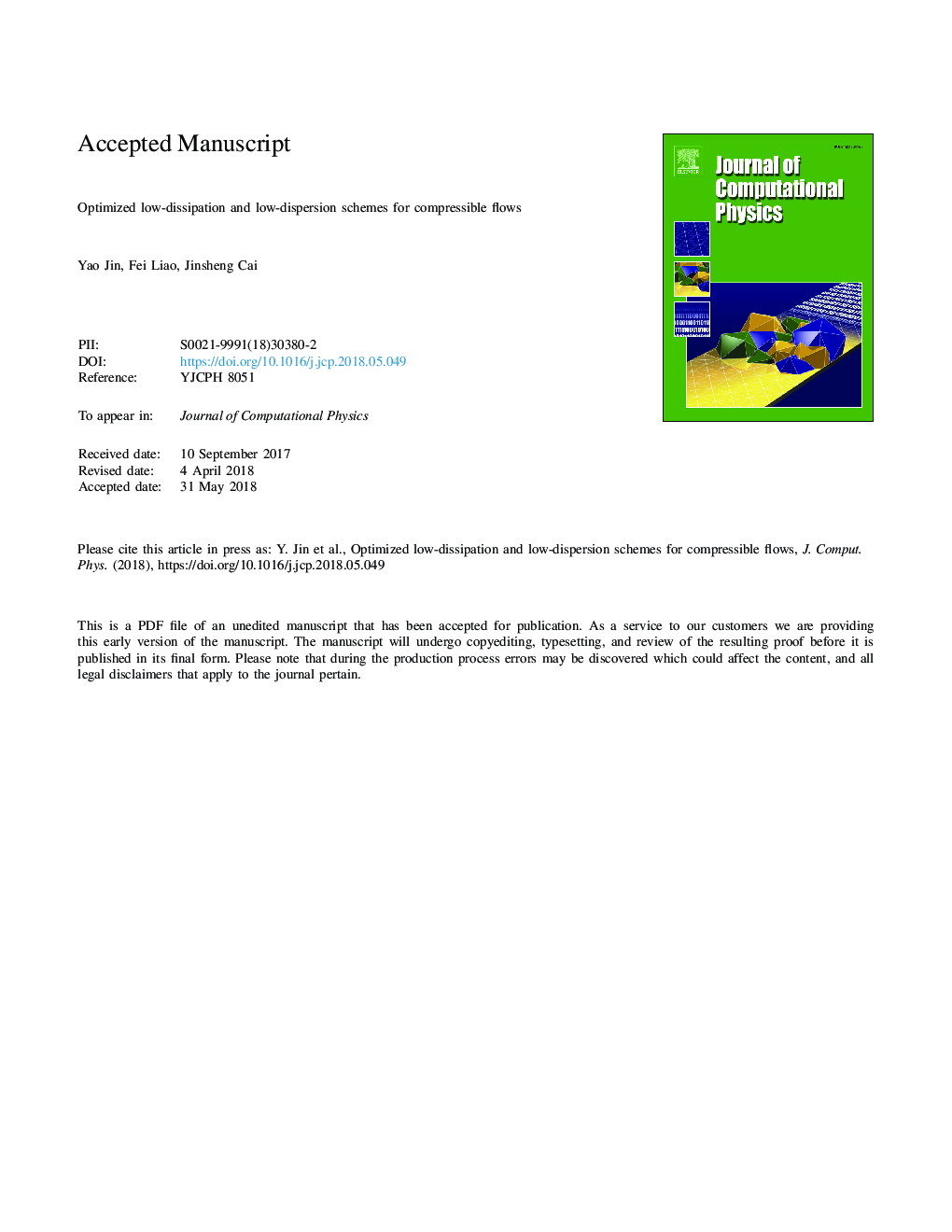| Article ID | Journal | Published Year | Pages | File Type |
|---|---|---|---|---|
| 6928698 | Journal of Computational Physics | 2018 | 36 Pages |
Abstract
Although interpolation-based finite difference methods have shown great success in the simulation of complex configurations, the schemes currently are still inappropriate in many circumstances due to their poor spectral properties. In this paper, a class of optimized low-dissipation and low-dispersion schemes is developed with the cell-centered finite difference method (Liao, J. Comput. Phys., 284:419-433, 2015). Firstly, the linear schemes with two free parameters which dominate the dispersion and dissipation properties independently are derived. Secondly, the two free parameters are optimized separately according to specific criteria to obtain the optimized linear schemes. Thirdly, for shock-capturing capability, the optimized non-linear schemes are acquired from the optimized linear schemes using the multi-stencil weighting technique. Meanwhile, a new series of weighting functions and smoothness indicators are derived following the idea of Hu (Hu, J. Comput. Phys., 229:8952-8965, 2010) for the optimized non-linear schemes. Finally, several benchmark cases are validated with the developed optimized linear and non-linear schemes. In flows with shocks, the optimized non-linear schemes can give more flow details than the non-linear reference schemes without noticeable robustness loss. In the low-speed problems, the optimized linear schemes perform much better than the corresponding upwind linear schemes. Additionally, satisfactory results are observed on the wavy grid, indicating the optimized schemes with cell-centered finite difference method are promising.
Related Topics
Physical Sciences and Engineering
Computer Science
Computer Science Applications
Authors
Yao Jin, Fei Liao, Jinsheng Cai,
